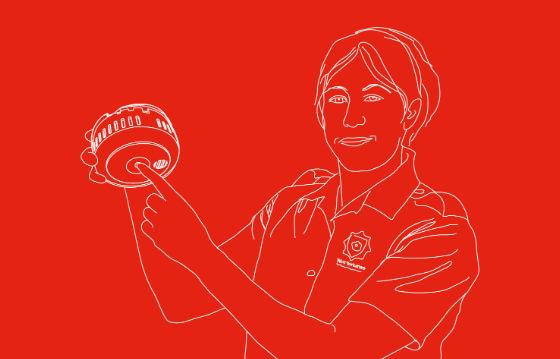
Fires can start anywhere - the more smoke detectors you have, the better protected your home is. Place detectors where they can be heard throughout your home, especially while sleeping.
Installation
- Fit smoke detectors on every level of your home, and in all regularly used rooms (i.e. bedrooms, living rooms).
- Landlords must install at least one smoke detector on each floor used as living accommodation.
- Never remove batteries unless replacing them immediately.
- Mount detectors on the ceiling, near the centre, at least 30 cm (12 inches) away from light fittings.
- Use a heat detector in the kitchen to avoid false activations.
- Do not fit a detector in bathrooms - steam can trigger them.
- Always follow the manufacturer’s instructions.